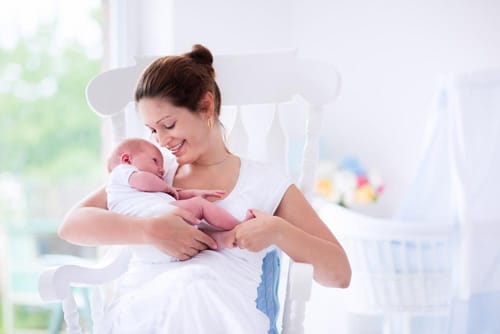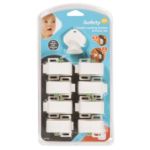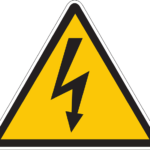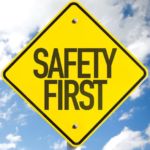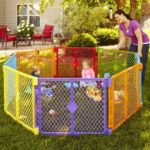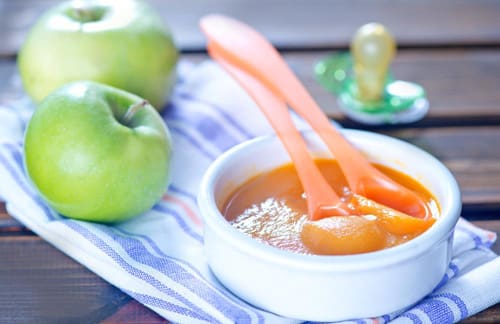
There are about 800, 000 foodborne illness cases in the U.S. that affect children under the age of 10.
Babies and young children are vulnerable to foodborne illness since their immune system is not developed enough to fight off foodborne infections.
Preventing serious health issues related to foodborne illness should be a concern for parents and caregivers.
Taking ACTION to prevent food contamination and illness requires taking extra care when preparing and handling food.
Baby food safety should be a top concern for all parents and caregivers of babies and young children.
A common concern for new mothers: Is using microwave for baby food safe?
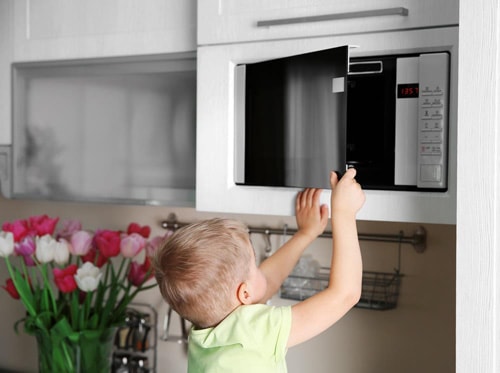
Baby food safety is always one of the main concerns for new mothers or parents.
Food illness, especially for newborns and young children, can lead to health issues that could have been prevented. There is the mistaken notion that if parents microwave food there is a loss of nutrients.
Also, many people think that heating food in the microwave does something bad to the food.
First, let’s discuss food safety and using the microwave.
- The heating of food in a microwave depends on the power rating and on the amount of water and density of the food being heated.
- For example, thicker pieces of food will be heated unevenly.
- If food is heated unevenly there can be a health risk since bacteria that can make people, especially babies and young children, sick remains on the food.
The World Health Organization states food cooked in microwaves is as safe as food that is cooked in a conventional oven.
There are two important myths about microwaves that may ease your decision to use a microwave to heat baby food.
- First, food that is cooked, or heated, in a microwave does not become radioactive.
- And second, energy from the microwave does not stay in the food or cause health issues.
Heating food in the microwave is one way to retain the vitamins and minerals present in the food.
No matter the source of heating, whether a microwave, stove, or oven there will be some loss of nutrients in the food you cook or heat.
What is one of the best cooking methods to retain nutrients?
This requires a method that cooks quickly and food is exposed to heat in small amount of time with little to no amount of liquid.
The most convenient method is to use a microwave.
Before you start to use the microwave to heat baby food consider the following:
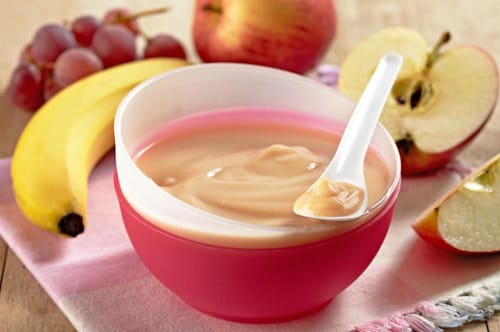
- Avoid heating baby food in plastic containers or bowls even if labeled microwave safe.
- Note: Some plastic bowls or containers can release chemicals that stick to food when heated. These chemicals can potentially affect baby’s development.
- Heat baby food in a glass jar, or follow the directions on the package.
- Tip: Only heat entire container if baby will eat entire portion. If not, transfer necessary portion that baby will eat into another container before heating.
- Use caution when heating baby food in microwave. Sometimes food will be heated unevenly and create hot spots which can burn baby’s mouth.
- Tip: Before serving food to baby or child stir it and let it cool thoroughly.
Why should mothers and parents avoid using plastics in microwaves?
Most plastic containers or bowls will contain bisphenol A (BPA) which is a chemical that is used to harden the plastic and keep it from breaking.
Also, the American Association of Pediatrics recommends parents to avoid using any clear plastic container or baby bottles that contain the letters “PC” or recycling number 7 since most will contain BPA.
Note: Opaque plastic bottles with the recycle numbers 2 and 5 usually will not contain BPA.
Baby Food Safety Guidelines to follow:
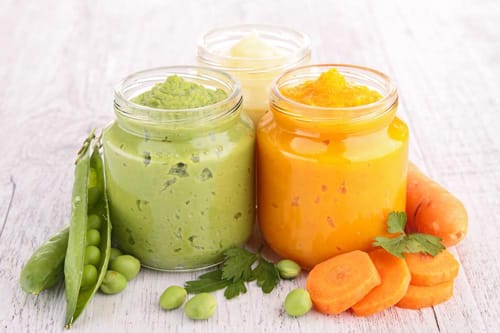
Make sure to wash hands with soap and water before handling baby food and also when preparing bottles of breast milk or formula.
- Look at the expiration dates on baby food. Avoid giving baby any food that is expired.
- Use an insulated cooler with frozen packs to transport food and filled bottles.
- Don’t feed child or baby home canned food because of risk of harmful bacteria that can cause sickness.
- Note: Don’t feed baby any raw dairy products, unpasteurized milk, partly raw meat, fish, eggs, or poultry due to risk of sickness from harmful bacteria. Any child younger than 1 year old should not be given cow’s milk.
Things to DO and DON’T do when handling baby food:
DO:
- Check to see the safety button on the lid of commercial baby food jars is down. Don’t use product if the jar lid does not pop when opened.
- Wash utensils, food processor, and blenders with hot water and detergent every time these come in contact with baby’s food.
- Any perishable items such as formula, milk or food should be refrigerated. Don’t give food, milk or formula that has been left more than two hours out of refrigerator.
- Can use small jars to freeze homemade baby food.
DON”T:
- Don’t feed baby from a jar of baby food and put in refrigerator. Saliva on spoon can potentially contaminate any remaining food.
- Tip: Put a serving size on a dish and refrigerate the remaining food. Any food remaining on dish should be thrown away.
- Don’t’ give any unpasteurized fruit or vegetable juice. Unpasteurized juices may contain harmful bacteria.
- Don’t use honey to sweeten baby bottle so that baby drinks water.
- Don’t give baby teas that is brewed from star anise. Teas with star anise can cause illness to infants.
- Don’t place dirty diapers in the same bag used for baby food and bottles.
Some of the top questions asked by new mothers about feeding baby food safely:
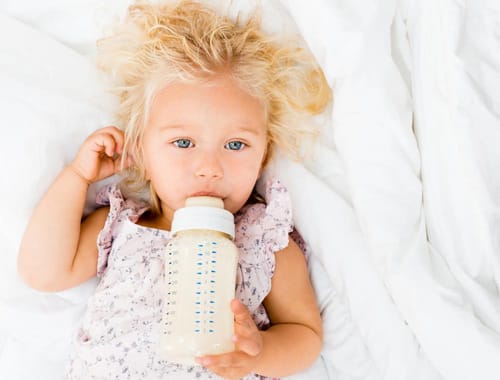
How can I make sure that formula is safe for baby?
3 simple steps to follow to make sure baby formula is safe from harmful bacteria:
- Use clean bottles and nipples. Sterilize bottles and nipples before first use. Can wash by hand or dishwasher after first use.
- Prepare safe water for mixing with formula. Boil tap water or bottled water for one minute. Let water cool to body temperature before mixing with formula.
- Prepare formula as will be needed. Formula can get contaminated when prepared and also when improperly stored. Only prepare formula in small quantities and when needed to reduce risk of contamination.
How do I know when baby is hungry or full?
Some common signs that baby is hungry may include:
- Crying or fussing.
- Moving hands to mouth and sucking own hands.
- Grabbing or leaning toward bottle or breast.
Signs baby is full can include:
- Handing food back.
- Falling asleep.
- Pulling away from breast, spoon, or bottle.
- Keeping mouth closed tightly or shaking head.
What are some foods to avoid for babies or young children?
- Avoid giving food to babies and young children that is too spicy, sugary, or salty.
- Avoid any food that is a potential choking hazard such as:
- Raisins, whole grapes, popcorn seeds, nuts, chips, and pretzels.
- Raw fruits and vegetables, hot dog pieces, or sticky food like marshmallow or peanut butter.
- Don’t give any baby honey due to the risk of illness (infant botulism).
Baby Food Nutrition Tips for the First Year:
(Note: The following is an example (NOT an all exclusive list) of the things baby can eat during first year)
During the first three months: Baby will be consuming just breast milk or formula. These provide all the nutrients baby needs for growth for the first months before introducing solid food.
4 to 6 months: Fortified single grain cereals can be mixed with breast milk or baby formula. Iron present in these cereals is an important nutrient needed by baby.
6 to 8 months: Strained or pureed fruits such as apricot, pears, apples, or bananas. Strained or pureed vegetables such as carrots, potatoes, peas, or squash. Very small pieces (pea-size) of cooked chicken or turkey.
8 to 10 months: Small o-shaped cereals, small pieces of cooked pasta, or teething crackers. Mashed vegetables and fruits.
10 to 12 months: Baby can eat most foods adults eat if properly mashed or cut up in small pieces. Avoid giving honey or cow’s milk for the first year.
